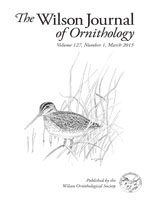Articles (2)
MAJOR ARTICLES (10)
SHORT COMMUNICATIONS (14)

No abstract available
Description of the nest, eggs, and nestling of Rufous-bellied Bush-Tyrants (Myiotheretes fuscorufus)
No abstract available
No abstract available
